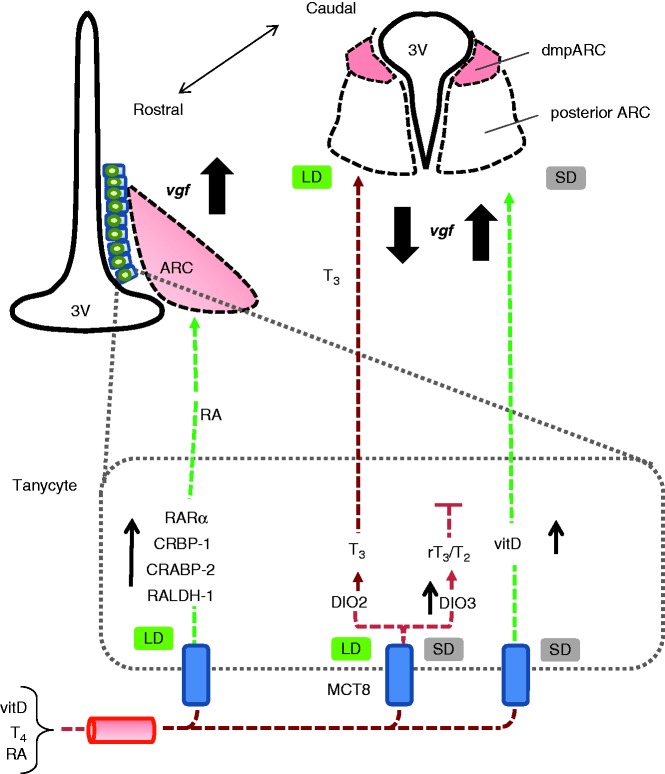Figure 5.
Schematic summary of the proposed photoneuroendocrine control of VGF expression. Thyroxine (T4) is taken up from the circulation into tanycytes via MCT8 transporters, and in LD is converted by DIO2 to T3 (Ebling 2014). Furthermore, in LD, components of the retinoic acid-signaling pathway – CRBP-1, CRABP-2, RAR, and RXR – are all upregulated in the Siberian hamster (Ross et al. 2005, Barrett et al. 2006), while RALDH-1 is increased in the photoperiodic rat (Shearer et al. 2010). We demonstrate that VGF expression and promoter activity in SH-SY5Y cells is increased in response to treatment with RA and vitamin D and reduced in response to treatment with T3. Furthermore, VGF mRNA expression is reduced in response to intra-hypothalamic T3 administration in the SD-exposed Siberian hamster. In SD, expression of DIO3 is upregulated, and thus, inactive metabolites of T4 such as rT3 and T2 are produced alongside reductions in components of the retinoic acid-signaling pathway, while vitamin D plasma levels are increased. This may account for the increase in VGF expression in the dmpARC whilst reducing VGF expression in the ARC. Adapted from Ebling (2014).

 This work is licensed under a
This work is licensed under a 